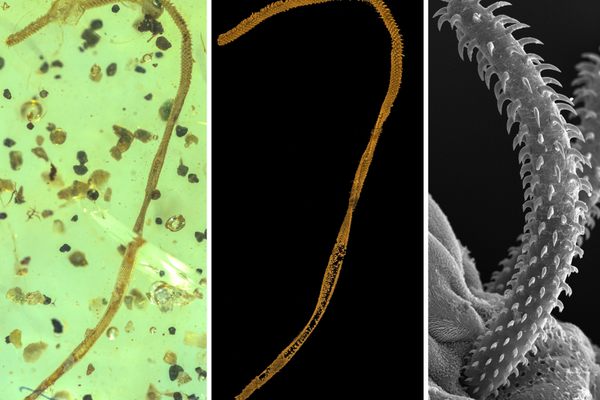Proteins Preserved on 3.8 Million-Year-Old Eggshell Are a Portal to ‘Deep Time’
These proteins are 50 times older than the oldest DNA ever sequenced.

The Olduvai Gorge, where the eggshells were found. (Photo: Noel Feans/CC BY 2.0)
There’s a scale at which time stops making instinctive sense. What we call “ancient” civilizations existed just a few thousand years ago. The oldest piece of DNA that’s been sequenced is 700,000 years old. The earliest remains of humans outside of Africa are dated to 1.7 million years in the past; the hominins who preceded humans were walking upright 6 million years ago.
Our ability to see clearly back in time gets fuzzier the further we look back; 700,000 years ago might seem as distant as 1.7 million. One of the most powerful tools we have right now to understand how the world has come together into the present is DNA analysis—but DNA only lasts for so long. Look back into “deep time,” the millennia upon millennia, the millions and millions and tens of millions of years of life on this planet that came before, and it’s almost like looking in the dark.
Other tiny bits of life, though, can have a longer shelf life than DNA. Proteins, for instance—earlier this year a team of scientist found traces of proteins 240 million years old, preserved in fossilized blood vessels.
Scientists are still debating, though, how much they can trust these very old proteins and which have been “satisfactorily substantiated,” as the authors of a new paper put it. How well have they really been preserved? How much information have they retained?
In the new study, published in the journal eLife, a team of scientists was able to pull proteins from ostrich eggshells dated to 3.8 million years ago and authenticate their sequences, making these the oldest proteins ever “extracted and decodes,” as Science reports.

Australopithecine footsteps. (Photo: James St. John/CC BY 2.0)
These eggshells came from a site in Tanzania where the hominins australopithecines walked all those millions of years ago. In the past, scientists have had difficulty finding biological material that’s lasted over these long stretches of time in Africa. The environmental conditions aren’t conducive to preservation; that 700,000-year-old DNA came from a horse frozen and found in the Yukon.
These scientists investigated whether the calcite surface of a fossilized eggshell might have provided a more stable substrate for proteins to survive, and they found they were right—the proteins had survived.
What that means is that scientists may now be able to find little traces of animals going more than 50 times further back into the past than the oldest DNA takes them. It’s as if they were looking in a microscope and all of a sudden could focus more clearly on a much, much smaller scale than they were seeing before.
For instance, this discovery opens up more clearly the possibility that scientists could extract and sequence proteins from ancient hominin bones, which could tell them in much more details how all the human-ish primates walking the earth were related to each other, or not. In an interview with the BBC, one of the scientists called these proteins the “biological barcodes of these relationships.” In other words, they may have found a clue to clarifying how humans came to live on and dominate the earth.









Follow us on Twitter to get the latest on the world's hidden wonders.
Like us on Facebook to get the latest on the world's hidden wonders.
Follow us on Twitter Like us on Facebook